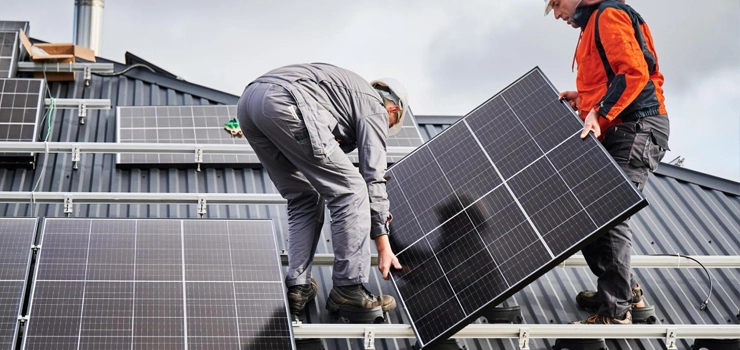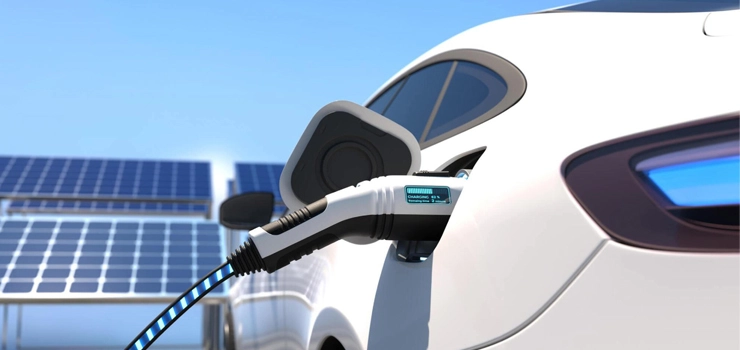Table of Contents
Electric vehicles like Tesla offer an eco-friendly alternative to traditional gas-powered cars. However, powering these vehicles requires careful consideration, especially when utilizing solar energy. How many solar panels to charge a Tesla depends on various factors, including the car model, daily driving distance, roof size, sunlight availability, and local climate.
What Factors Affect How Many Solar Panels I Need to Charge My Tesla?
Several key variables influence the number of solar panels required to charge a Tesla effectively. The solar panel cleaner maximizes energy absorption and ensures optimal performance. Additionally, the efficiency of solar panel heaters impacts the overall energy output, affecting the number needed for charging. The availability of government incentives also influences the decision, as financial benefits can offset installation costs.
Is my roof size enough for enough solar panels to charge a Tesla?
The suitability of your roof size is essential in determining the number of solar panels for Tesla charging. Larger roofs offer more space for installation, accommodating more panels. However, even with limited space, innovative solutions like Hyundai’s compact solar panels can optimize energy production efficiently using available resources.

Am I Considering Daily Driving Distance When Calculating Solar Panels for Tesla Charging?
When calculating the number of solar panels for Tesla charging, it’s crucial to consider daily driving distance. Higher mileage requires more energy, necessitating additional panels for adequate charging. By factoring in usage patterns, you can tailor the solar panel system to meet your specific needs, ensuring reliable power for your vehicle.
Are Different Types of Solar Panels That Impact the Number Needed for Tesla Charging?
The type of solar panels utilized significantly impacts the Tesla charging needed. Advanced technologies, such as those found in Hyundai’s innovative solar panels, offer enhanced efficiency, allowing for greater energy generation with fewer panels. Selecting the most suitable panel type can optimize charging capabilities while maximizing energy savings.
What is the Tesla Model I Drive and How Does It Affect Solar Panel Needs?
The Tesla model you drive directly affects your solar panel needs. Each model has unique energy requirements, influencing the number of panels necessary for charging. Whether you own a Tesla Model 3 or another variant, understanding your car’s specific energy demands is essential in designing an effective solar charging solution.
Is My Local Climate a Factor in Determining How Many Solar Panels I Need to Charge a Tesla?
Local climate plays a significant role in determining the number of solar panels needed for Tesla charging. Areas with abundant sunlight offer optimal conditions for solar energy production, requiring fewer panels to meet charging needs. Conversely, regions with limited sunlight may necessitate additional panels to compensate for lower energy output.
How Much Sunlight Does My Roof Get Throughout the Day for Tesla Charging?
The sunlight your roof receives daily directly impacts Tesla’s charging efficiency. Roof orientation, shading, and geographical location influence sunlight exposure, affecting energy production. By assessing these factors, you can optimize panel placement to maximize solar absorption, ensuring consistent and reliable charging for your Tesla.
Are There Government Incentives That Can Help Offset the Cost of Solar Panels for Tesla Charging?
Government incentives can significantly offset the cost of solar panels for Tesla charging. Various programs offer financial incentives, tax credits, and rebates to promote renewable energy adoption. These incentives can make solar panel installation more affordable, facilitating sustainable transportation solutions while reducing environmental impact.
What is the Cost of Installing Enough Solar Panels to Charge My Tesla?
The cost of installing enough solar panels to charge your Tesla depends on various factors, including panel type, installation complexity, and available incentives. While initial investment may seem significant, long-term savings on fuel expenses and potential incentives can make solar charging an economically viable option. By carefully evaluating costs and benefits, you can make informed decisions regarding solar panel installation for your Tesla.
Can I Combine Solar Panels with Home Battery Storage to Charge My Tesla More Efficiently?
Combining solar panels with home battery storage offers an efficient solution for charging your Tesla. Battery storage systems store excess solar energy generated during the day, allowing for convenient charging during periods of low sunlight or at night. This integrated approach enhances energy independence and resilience, providing a reliable and sustainable power source for your electric vehicle.
In conclusion, determining how many solar panels to charge a Tesla requires considering roof size, daily driving distance, panel type, car model, local climate, sunlight exposure, government incentives, installation costs, and potential integration with battery storage solutions. By assessing these elements comprehensively, you can design a tailored solar charging system that meets your needs while promoting sustainability and cost-efficiency. For more insights on renewable energy solutions, visit Londonbtimes.com.




